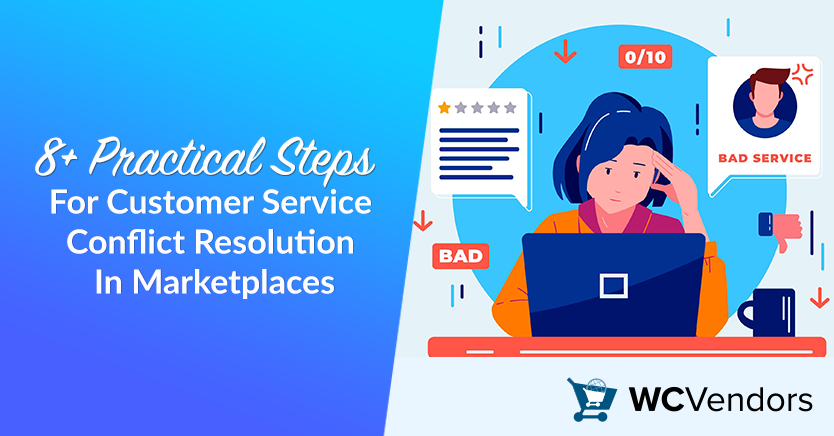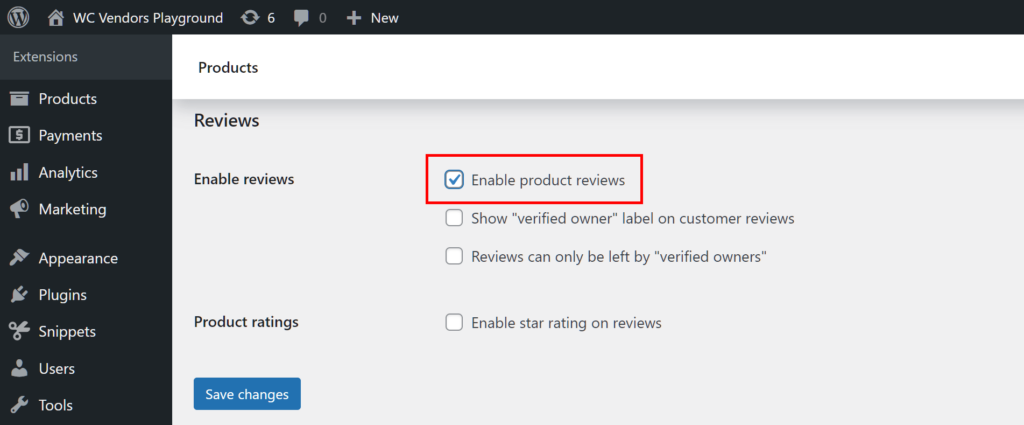
Handling disputes between vendors and customers can be tricky. That’s why customer service conflict resolution is so important for any multivendor marketplace.
Issues like late deliveries, damaged products, or miscommunications can arise anytime. If left unresolved, they can harm your marketplace’s reputation and weaken vendor trust.
In this article, we’ll share simple steps to handle conflicts effectively and avoid escalation. With WC Vendors’ powerful tools, you can make the process smoother and keep your marketplace running stress-free.
Let’s get started!
Why Customer Service Conflict Resolution Matters
Customer service conflict resolution is the process of handling disputes between customers and vendors fairly and efficiently. It focuses on clear communication, solving problems effectively, and taking quick action. The goal is to ensure both sides feel heard and satisfied.

Conflict resolution ensures a positive experience for both customers and vendors. Resolving disputes quickly builds trust, prevents negative reviews, and encourages repeat business. It’s especially important during busy periods, like seasonal sales or flash deals, when transaction volumes spike.
1. Set clear policies
Clearly define rules for refunds, returns, and exchanges. Then, make sure customers and vendors understand what to expect by sharing these policies on your marketplace.
You can use vendor onboarding materials or dedicated policy pages to communicate these terms. Clear and accessible guidelines help reduce misunderstandings and prevent conflicts before they happen.
2. Offer transparent communication channels
Make it easy for customers and vendors to connect when issues arise. Encourage vendors to reply quickly to customer questions. Also, use tools like email or messaging plugins in your marketplace to make communication easier.
Basically, providing clear contact options builds trust and ensures faster conflict resolution. Meanwhile, streamlined communication reduces delays and helps avoid unnecessary escalations.
3. Automate conflict notifications
Set up notifications to alert vendors and admins when a dispute arises. WooCommerce allows vendors to receive order-related updates, which can include customer disputes.
These alerts ensure vendors and admins can respond quickly and address issues before they escalate. Timely notifications keep everyone informed and help maintain a smooth resolution process.
4. Track and document disputes

Keep a detailed record of every dispute. Include information like customer complaints, vendor responses, and final resolutions. Basically, this helps ensure accountability and creates a reference for similar issues in the future. Use WooCommerce order notes to document updates related to conflicts.
With WC Vendors Pro’s reporting tools, admins can track vendor performance and identify trends. Review these records often to find repeating issues. This helps you improve your processes and avoid future problems.
5. Provide vendor training
Empower vendors by equipping them with the skills to handle conflicts effectively. Offer guidelines on professional communication, quick response times, and solutions for common issues. Furthermore, share tips and best practices through training sessions, videos, or written materials.
You can use external tools or your marketplace’s blog to create helpful resources for vendors. Regular updates keep vendors informed and prepared to handle disputes.
6. Mediate vendor-customer disputes
When conflicts remain unresolved, admins can step in to mediate. Use tools like the WooCommerce Orders section to review order details, such as payment statuses and shipping updates. Employ ticketing systems to track communication between customers and vendors.
These tools help maintain a clear record of the dispute, ensuring fair and well-informed resolutions. Acting as a neutral party builds trust and prevents disputes from escalating further.
7. Enable customer reviews

Encourage honest feedback by enabling customer reviews on your marketplace. Reviews build trust by showing future customers how reliable vendors are and the quality of their products.
Vendors can use their communication tools to address complaints. This shows they care about fixing issues.
8. Implement an escalation process
Set up a system for escalating disputes when necessary. For example, unresolved conflicts can be routed to the admin for final resolution. WC Vendors’ centralized dashboard ensures admins have full visibility into escalated cases.
9. Offer compensation or alternatives
In cases of serious dissatisfaction, offering compensation can help repair customer relationships. Therefore, consider providing discounts, store credits, or free shipping as goodwill gestures.
These efforts show that your marketplace values its customers and is willing to make things right. Turning a bad experience into a positive one can build loyalty and encourage repeat business.
10. Monitor performance during peak seasons
Conflicts often arise during busy times like Black Friday or back-to-school sales when orders increase. Keep a close eye on vendor performance during these periods to spot issues early. Use tools like WooCommerce reports to track disputes and response times.
By finding delays or recurring problems, admins can fix them quickly. This helps keep your marketplace running smoothly and builds trust with customers.
11. Regularly review and improve policies

Customer needs and marketplace dynamics change over time. It’s essential to update your conflict resolution policies to keep them effective. Review feedback from vendors and customers to identify gaps or areas for improvement.
Clear, up-to-date policies also show customers and vendors that their concerns are taken seriously.
Conclusion
Customer service conflict resolution doesn’t have to be overwhelming or stressful. With the right approach, you can build a system that keeps your marketplace running smoothly, even during busy times.
Clear policies set expectations.
Open communication solves issues fast.
Proactive monitoring keeps everyone happy.
This approach builds trust and ensures both customers and vendors stay satisfied.
To simplify conflict resolution, here’s what you need to focus on:
- Understand its importance
- Set clear policies
- Enable communication
- Use automation
- Track disputes
- Train vendors
- Mediate disputes
- Leverage reviews
- Offer alternatives
- Prepare for peak seasons
- Review policies
By following these steps, you can create a marketplace where disputes are handled quickly. This keeps both customers and vendors happy.
Ready to improve conflict resolution in your marketplace? Explore WC Vendors’ features today and take the first step toward a smoother, more efficient system. If you have any questions or need guidance, don’t hesitate to reach out—we’re here to help!
